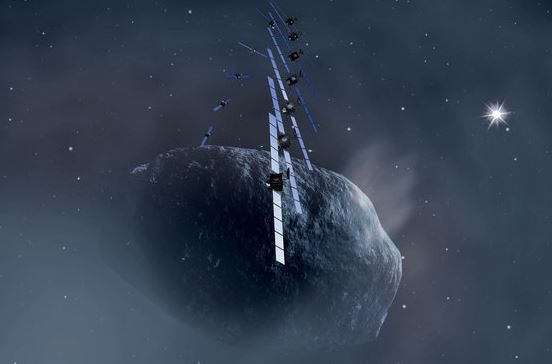The 67P/Churyumov-Gerasimenko (67P/C-G) comet reeks of rotten eggs and horse urine, by the way, in case you have ever wondered what comets smell like. To be more specific, the stench also includes the aromas of sweet ether, alcohol vinegar, bitter almonds and formaldehyde.
Scientists cannot tell us whether other comets also have a pong.
The Scientists from the University of Bern, Switzerland, analyzed the chemical in the comet’s coma to determine what it would smell like. The coma is the cloudy envelope around the nucleus of a comet.
The team explained “While this is unlikely to be a particularly attractive perfume, remember that the density of these molecules is very low, and that the main part of the coma is made up of water and carbon dioxide, mixed with carbon monoxide.”
In a European Space Agency blog the scientists wrote:
“If you could smell the comet, you would probably wish that you hadn’t.”
Rosetta orbiting the 67P/C-G comet (Photo: European Space Agency)
To carry out their analysis, the team used equipment aboard the European spacecraft Rosetta that is performing a detailed study of the comet with an orbiter and lander module. The lander module is set to drop onto the comet’s icy surface on November 12th.
As 67P/C-G gets closer to the sun its stench will get stronger, says team leader Kathrin Altwegg. As it heats up it will release more gas and form the coma.
Even though 67P/C-G is more than 400 million kilometers from the Sun, it already has a rich mixture of molecules, the scientists say.
Before carrying out the analysis, the researchers had expected the comet just to release the most volatile molecules via sublimation (solid turning directly into gas), namely carbon monoxide and carbon dioxide. However, one of the instruments, ROSINA (Rosetta Orbiter Spectrometer for Ion and Neutral Analysis), detected a vast array of molecules, including carbon dioxide, carbon monoxide, water, carbon disulphide, formaldehyde, hydrogen cyanide, methane, methanol, ammonia, sulfur dioxide, and hydrogen sulfide.

